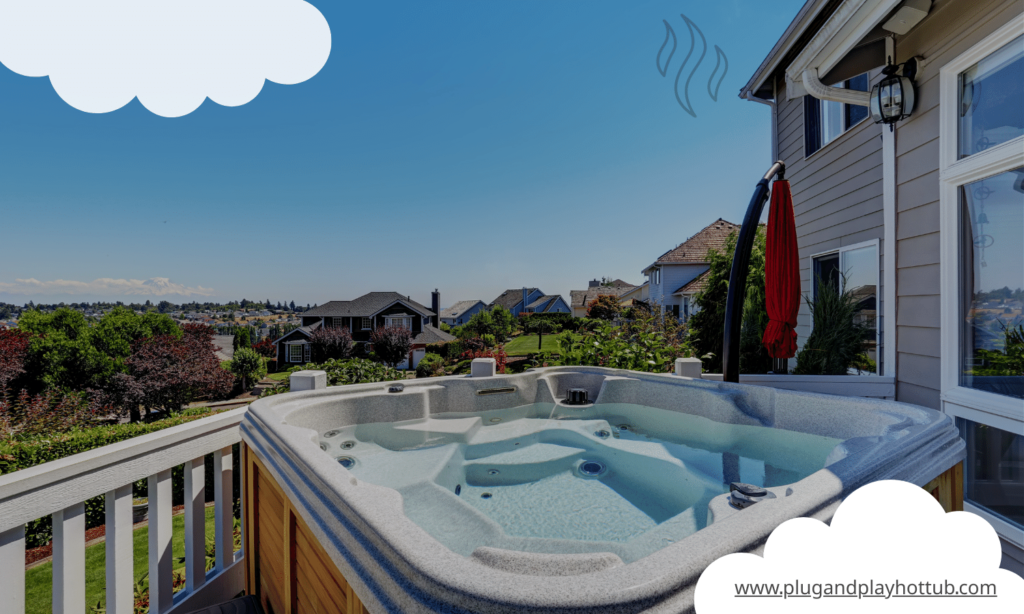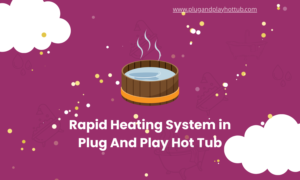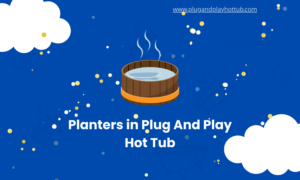
Plug and play hot tubs can vary widely in energy efficiency, depending on the quality of materials and components used in their construction. Many basic plug-and-play tubs use minimal insulation around the inner shell, leading to significant heat loss while the water is being heated.
They may also lack efficient pump systems and other design factors that minimize electricity usage.
However, there are now high-quality plug and play spa models on the market that focus extensively on maximizing energy efficiency through better insulation, heating systems, and smart controls. These tubs consume far less electricity during operation.
What Makes a Plug-and-Play Hot Tub Energy Efficient?
Insulation
The most energy-efficient plug-and-play tubs have at least 2-3 inches of rigid foam insulation surrounding the inner shell and plumbing components underneath the tub. This thickness prevents heat loss to the surroundings and dramatically reduces the amount of electricity needed to maintain desired water temperatures.
Efficient Pumps
Energy efficient variable speed or dual-speed circulation pumps that meet ENERGY STAR ratings can cut energy costs by 40-60% compared to standard single-speed pumps in portable spas. Some models also allow pump speeds to be reduced during filtration cycles.
Covers
A tapered cover with 4-5 inches of rigid foam insulation prevents evaporation and traps heat when the hot tub isn’t being used. This can reduce heating costs substantially, often by 30-50%. They also improve safety.
Heater Type
Energy-efficient stainless steel heating elements tend to heat water faster and retain more ambient heat in the tub than non-metallic elements. This reduces reheating needs.
Additional Features
Programmable timers, eco modes, low-flow jets, and circulation pumps that activate only when filtration is needed also improve efficiency.
What Are the Benefits of Choosing an Energy Efficient Model?
Lower Operating Costs
The main benefit is that energy-efficient plug-and-play hot tubs can use 60-80% less electricity than inefficient models during typical operation. With significant savings on monthly energy bills, an efficient tub can pay for itself in just 1-3 years through lower electrical costs.
Better Heat Retention
The improved insulation and cover systems used in energy efficient portable spas allow them to retain heat extremely well when not in use. This means quick reheating times of as little as 15-30 minutes between uses.
Lower Environmental Impact
With far fewer kilowatt-hours consumed overall, energy-efficient plug-and-play tubs have less ecological impact through lower carbon emissions at power plants.
Peace of Mind
There is strong satisfaction in knowing your portable hot tub is using the least amount of energy possible to minimize monthly costs and environmental footprint.
Safety
Better covers also improve safety by preventing access when the hot tub is not supervised.
How Much Do Energy Efficient Plug and Play Hot Tubs Cost?
In general, expect to pay $3,500-$6,000 for a good quality energy efficient plug-and-play hot tub. Basic models with decent efficiency ratings start around $2,500.
High-end models constructed from acrylic with the best insulation, pumps, and luxury features can cost $8,000+. Consider that portable spas with good energy ratings do tend to have better overall construction and component quality that enhances their longevity.
In the long run an efficient hot tub saves money when factoring in lower power bills and fewer repairs over time compared to inefficient tubs. Here is a table comparing efficiency features:
| Feature | Basic | Energy Efficient Model |
|---|---|---|
| Insulation | 1-2 in foam | 3+ in foam |
| Cover | 3-4 in foam | 4-5 in tapered foam |
| Pump Type | Standard single speed | ENERGY STAR dual speed |
| Heating Elements | Non-metallic | Stainless steel |
| Certifications | None | ENERGY STAR, etc. |
What Should You Look for When Buying?
- Insulation – Check the R-value, which measures thermal resistance. Higher R-values (R-10 to R-20 range) indicate more insulation. Also, confirm insulation fully surrounds the inner shell.
- Pump Info – Verify the circulation pump meets ENERGY STAR efficiency standards for flow rates and power consumption or has adjustable dual/variable speed capabilities.
- Heater Details – Stainless steel heating elements are more efficient. Check heating power in kilowatts and target heating time to reach 100°F.
- Cover Thickness – Ensure the cover has 4-5 inches of tapered rigid insulation for safety and heat retention.
- Certifications – Look for ENERGY STAR rating, California Energy Commission listing, or other third-party efficiency certifications.
Conclusion
It pays to carefully analyze the energy efficiency of any plug and play hot tub purchase. Seek out a portable spa with the right combination of insulation, cover, efficient pump(s), and heating systems to minimize electrical costs and environmental impact.
The right tub delivers the benefits of hydrotherapy using minimal energy for years of economic relaxation.



